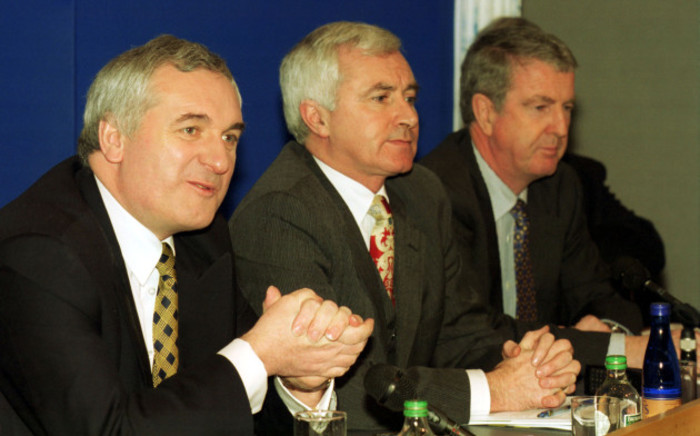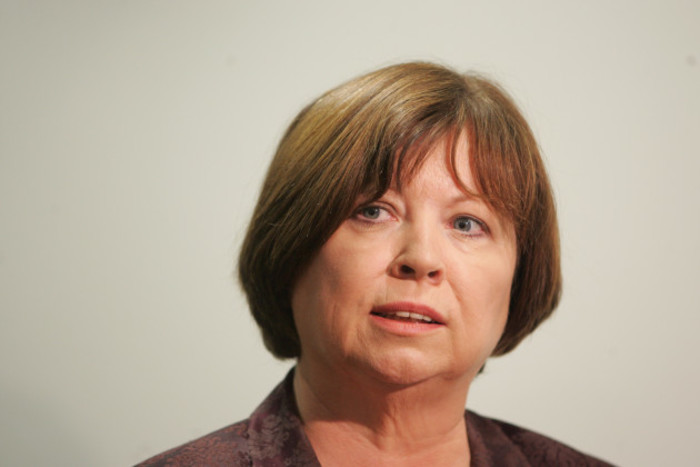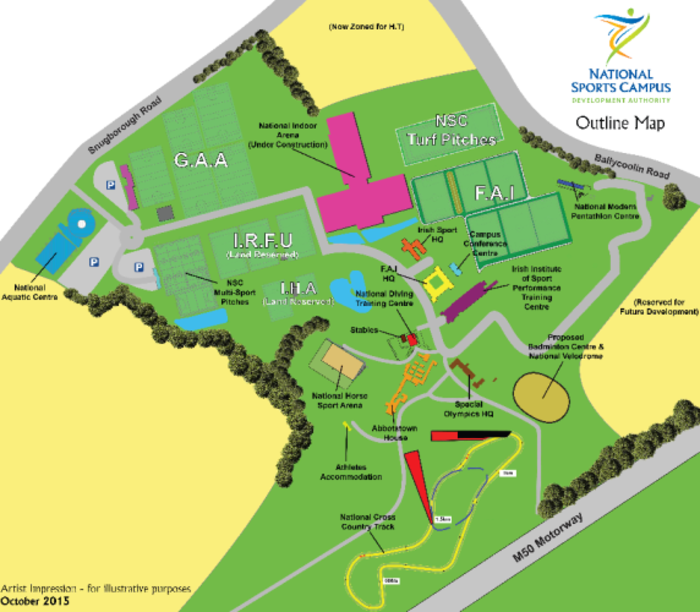Whatever happened to... The 65,000-seat 'Bertie Bowl' stadium in west Dublin?
Sports-mad former taoiseach Bertie Ahern wanted to build a huge stadium in Abbottstown.
OVER THE PAST few weeks, Fora has taken a look at some of the more notable big-ticket projects that were floated during the Celtic Tiger period – or in the aftermath of its demise.
Most recently, we detailed the story behind the Point Village shopping centre, which was completed but remains a ghost town. In this installment, we’re going a bit further back to look at one of the more famous political debacles involving former taoiseach Bertie Ahern.
Here’s how plans for a west Dublin sports centre, popularly referred to by its nickname the ’Bertie Bowl’, turned into a farce that would ultimately cost taxpayers tens of millions by the time it was officially scrapped.
What is it?
Ahern’s Fianna Fáil government pushed ahead with many big-ticket projects around the time of the Celtic Tiger, but few were as close to the then-taoiseach’s heart as the Bertie Bowl.
Officially titled Stadium Ireland, the idea was to build a huge sports campus in Abbottstown in west Dublin on a 500-acre plot of land.
A range of sports facilities were to be included, from a 15,000-seat indoor arena, several sports halls and tennis courts, to a sports science and medical centre.
An aquatic centre with a 50m pool was later added to this already ambitious list, as well as a golf academy, velodrome and offices for sports organisations.
But the flagship feature of the Bertie Bowl was to be a 65,000 all-seat stadium to replace Lansdowne Road. At the time, the old Lansdowne Road ground, which hosted both international soccer and rugby matches, was in a dilapidated state.
There had been plans to replace it with a 45,000 all-seat stadium in Saggart, south Dublin, named after the then-sponsors of the Irish football team, Eircom. However, the government abandoned this idea in favour of Stadium Ireland.
 Ahern and former sports minister Jim McDaid (centre)
Ahern and former sports minister Jim McDaid (centre)
Many of Ahern’s opponents dismissed the stadium as a vanity project for the sports-mad, Dublin-born taoiseach. Former Labour minister Pat Rabitte was credited by the Guardian as coining the term ‘Bertie Bowl’, a label which stuck for the controversial project.
When was it first suggested?
One of the first serious feasibility studies for the project was carried out by PricewaterhouseCoopers in 1999.
What happened?
The government committed to backing the Bertie Bowl in 1999, but a host of problems meant that it never saw the light of day. The major one was that cost estimates were all over the place.
It was first thought that the scheme would cost about IR£280 million. Paddy Teahon, the former top civil servant who was heading up the project, claimed that it would cost IR£350 million (€444 million at the time).
A later report carried out by London engineering firm High Point Rendel and published in 2002 put the price closer to €900 million.
When a few other factors, such as transport infrastructure costs, were allowed for, this jumped again to a potential bill of more than €1 billion. There was also a question as to the logic of building the stadium when Dublin already had Croke Park and Lansdowne Road.
The rising estimates spooked the Progressive Democrats, Fianna Fáil’s coalition partner at the time. It looked likely that, at the very least, all the additional features at the ground, such as the 15,000-seat indoor arena, would end up being scrapped.
 Former Progressive Democrats leader Mary Harney
Former Progressive Democrats leader Mary Harney
There were still hopes in the IRFU and in government circles that the 65,000-seat centrepiece stadium could still go ahead after the report was published.
In February 2002 the BBC quoted Sports Minister Jim McDaid as saying: “As long as Bertie Ahern is taoiseach, the dream of having this stadium here in this country will be a reality.”
Further complicating matters was the fact that Ireland and Scotland had launched a joint bid to host the 2008 European soccer championships.
Stadium Ireland was a key part of the bid, and Scottish officials were still expressing confidence that the stadium would be finished up until February 2002. But their hopes were misplaced as it became clear that the project would simply cost too much to build.
The National Aquatic centre did eventually get off the ground, although this too was fraught with controversy. It was built at a cost of €74 million, more than double initial estimates.
The government instead decided to redevelop Lansdowne Road as what is now the Aviva Stadium, and plans to build the Bertie Bowl were shelved in September 2002.
What’s the latest?
Bertie Ahern was re-elected as taoiseach in 2002, but the stadium never became a reality. It receded from the public consciousness and was rarely reported on for the next few years or so.
In 2009, Fingal County Council granted planning permission to the National Sports Campus Development Authority to build a range of features on the former Bertie Bowl site.
 The National Sports Campus in Abbotstown
The National Sports Campus in Abbotstown
Facilities similar to many of those originally envisaged as part of the Stadium Ireland project, such as the national horse sports arena and high performance training facilities for a range of disciplines, did end up going ahead, while others, such as a velodrome, are in the works.
However, a notable absentee is the Bertie Bowl itself, which looks dead and buried.
It later emerged in private documents published by the Mahon Tribunal that Ahern had dismissed plans for the government to part-fund the construction of a stadium in Neilstown, Clondalkin, five years before floating his own vision for the Bertie Bowl.
It also later became clear just how close the project was to the former taoiseach’s heart. On his last day in the Dáil in January 2011, Ahern was asked by RTÉ if he had any regrets.
At that time, the country was in recession and the banks were in crisis, both issues which Ahern did namecheck. However, the Dubliner surprised many when he lamented the failure to go ahead with the Bertie Bowl.
“I still think we didn’t get a proper national infrastructure stadium. It’s an achievement I tried hard to do, but didn’t get,” he said.
A little over a year later, it emerged in the Public Accounts Committee that €43 million was spent on the never-built stadium for the repeatedly revised plans.
Committee chair John McGuinness remarked at the time: “There has been too much money wasted in the past without things being properly thought out.” Good thing that would never happen again.






